Socio-Economic Levels in Latin America
In the traditional collection of demographic data in Latin America, it was obviously important to obtain age/sex distributions. Such distributions are obviously important in the planning for area such as education, healthcare, labor, pensions, etc. More so than some other places, it was also important to collect information about socio-economic characteristics. Why? Latin America is marked by sharp socio-economic inequalities, whereupon social and political policies will impact different classes in radically different ways.
Whereas the definitions of age and sex are unambiguous, socio-economic level is much more difficult to articulate. In the USA, it is customary to use annual household income (before taxes and including wages, tips, alimony, interests and other sources of income) as the single variable that would best encapsulate spending power. This is possible through a unique set of circumstances that do not necessarily exist elsewhere (for example, income taxes are filed each year so that most people in the USA have at least an approximate idea of their 'reported' household incomes). In Latin America, household income is problematic due to a variety of reasons:- hyper-inflation, non-cash and barter activities, unsteady cash flows, absence of household financial bookkeeping, differences in costs of goods and services, as well as a general reluctance to reveal household wealth.
In most Latin American countries, standardized systems of socio-economic levels are in place. In a number of Latin American countries, the definition of socio-economic level was formulated under the aegis of the national marketing associations. Typically, these definitions were obtained through a careful examination of a large number of variables and selecting just those essential, non-redundant variables that convey the most information about socio-economic well-being. The approach is necessarily reductionistic, since the objective is to ask as few questions as necessary to determine the socio-economic level. In each country, the selected variables are those that best reflect the social and economic realities there. Consequently, it is expected that the definitions would be different across countries. The differences begin with the number of socio-economic levels and continues to the details in those definitions.
In the table below, we show the nomenclature of the various socio-economic levels that are in used in the Latin American countries that are currently served by IBOPE Media Information. This is verily an 'alphabet soup' in which all manners of alphabets, numerals and labels come into play.
| Country | Socio-Economic Level Categories |
| Argentina | A, B, C1, C2, C3, D, E |
| Brazil | A, B, C, D, E |
| Chile | A, B, C1, C2, C3, D |
| Colombia | 6 (Alto Alto), 5 (Alto), 4 (Medio Alto), 3 (Medio Bajo), 2 (Bajo Alto), 1 (Bajo) |
| Costa Rica | Alto, Medio, Bajo |
| Ecuador | Alto, Medio, Bajo |
| Guatemala | Alto, Medio, Bajo |
| Mexico | A, B, C+, C, D+, D, E |
| Panama | Alto, Medio, Bajo |
| Paraguay | Alto, Medio, Bajo |
| Peru | A, B, C, D, E |
| Uruguay | A, B, C1, C2, C3, D1, D2, DE |
| Venezuela | A, B, C, D, E |
In the following sections of this page, we will provide brief characterizations as well as sample pictures of various socio-economic levels in Latin America.
![]()
Socio-Economic Level "
A" San Salvador, El Salvador (photo credit: Roland Soong) |
 Montevideo, Uruguay (photo credit: Pablo Verdin) |
 Caracas, Venezuela (photo credit: LaMadrid-Markwald) |
Multimillionaires with inherited wealth
Owning rent-producing properties
Living in ostentatious luxury
Residences located in exclusive residential neighborhoods
![]()
Socio-Economic Level "B"
 Panama City, Panama (photo credit: Nitzia Thomas) |
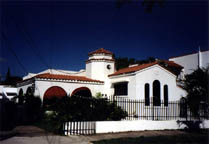 San Juan, Puerto Rico (photo credit: Pablo Verdin) |
Multimillionaires
Owning rent-producing properties
Living in comfortable luxury
Residences located in exclusive residential neighborhoods
![]()
Socio-Economic Level "
C1" Cardoso, São Paulo, Brazil (photo credit: GAP) |
 Buenos Aires, Argentina (photo credit: Pablo Verdin) |
 Lima, Peru (photo credit: Deborah Levy) |
Living like a rich person, but not really so
Earning high salary at work
High-level executives or professionals at large firms
Living in as much luxury as salary allows
Same habits as Levels "A" and "B" for mass consumption
Different from Levels "A" and "B" in that they will be affected if they have to quit work
Members of first-class clubs and organizations
Children enrolled in first-class schools
Own or rent residence in residential zone
![]()
Socio-Economic Level "C
2"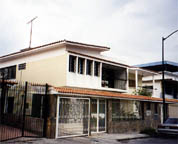 Caracas, Venezuela (photo credit: Pablo Verdin) |
 Mexico City, Mexico (photo credit: Roland Soong) |
 Asunción, Paraguay (photo credit: Pablo Verdin) |
Living in comfortable style
Earning middle salary at work
Professionals, executives or employees of mid-sized businesses
Enjoy some of the nice things of life
Able to easily meet their primary needs
Live in detached house or modern building in middle-housing area
![]()
Socio-Economic Level "
C3" Cambuquira, Minas Gerais, Brazil (photo credit: GAP) |
 San Juan, Puerto Rico (photo credit: LaMadrid-Markwald) |
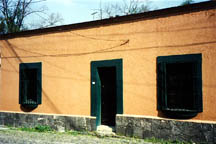 Mexico City, Mexico (photo credit: Deborah Levy) |
Social positions depend on economic situation
Able to enjoy some convenience but at the cost of economic sacrifice
Able to meet their primary needs
Employees of small business or informal company
Lower or middle income
Large family sizes
Live in heavily populated area
Live in apartment building or small detached houses
![]()
Socio-Economic Level "
D"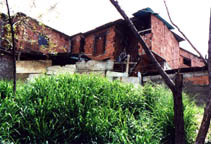 Caracas, Venezuela (photo credit: Pablo Verdin) |
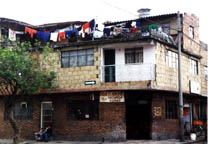 Bogotá, Colombia (photo credit: Deborah Levy) |
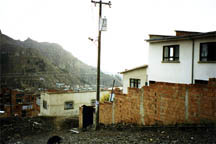 La Paz, Bolivia (photo credit: Pablo Verdin) |
Almost no convenience goods
Barely able to meet primary needs
Low-level worker at small company
Generally large family size
Living in heavily populated area or informal housing
![]()
Socio-Economic Level "
E"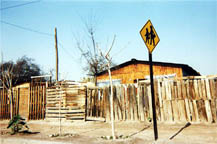 Santiago, Chile (photo credit: Paul Donato) |
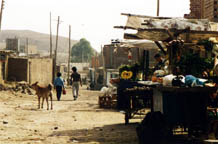 Lima, Peru (photo credit: LaMadrid-Markwald) |
 Panama City, Panama (photo credit: Nitzia Thomas) |
Unable to afford any product or service
Almost unable to meet their primary needs
No steady work
Generally large family size
Living in makeshift housing (of straw matting, cardboard, corrugated iron and boards) in marginal zones
![]()
Why should people care about inequality in wealth? That depends on who you are. For example, the market for luxury goods is restricted to those who can afford to pay; therefore, a large wealthy population would yield higher and sustainable revenues. At a deeper level, there are also concerns based upon reasons of moral and social justice. If inequality in wealth were solely the consequences of personal choices about work, effort and savings, then people are getting what they desire and deserve. But if wealth inequality is due either to the legacy of historical problems or contemporary corruption and lack of transparency, then this becomes a major social and political problem.
In the history of Latin America, it is possible to identify many instances of wealth inequality as being caused by foreign hegemonists, multinational corporations, dictators and oligarchies. In more recent history, though, Latin American countries have been largely democratically elected, and government policies seemed to cater squarely to the median voter and not to a small elite --- committing to universal education and healthcare, providing job training programs, creating environments that attract foreign investments, imposing progressive taxation, stabilizing currencies, imposing price controls, privatizating large government-owned enterprises, etc. Yet the irony is that the inequality in wealth has worsened during this period. It would seem that good intentions alone may not be enough to bring about social justice. Alternately, the rich and powerful are more insidious than we think ...
(posted by Roland Soong, 10/4/2001)
Related Link:
(Return to Zona Latina's Home Page)